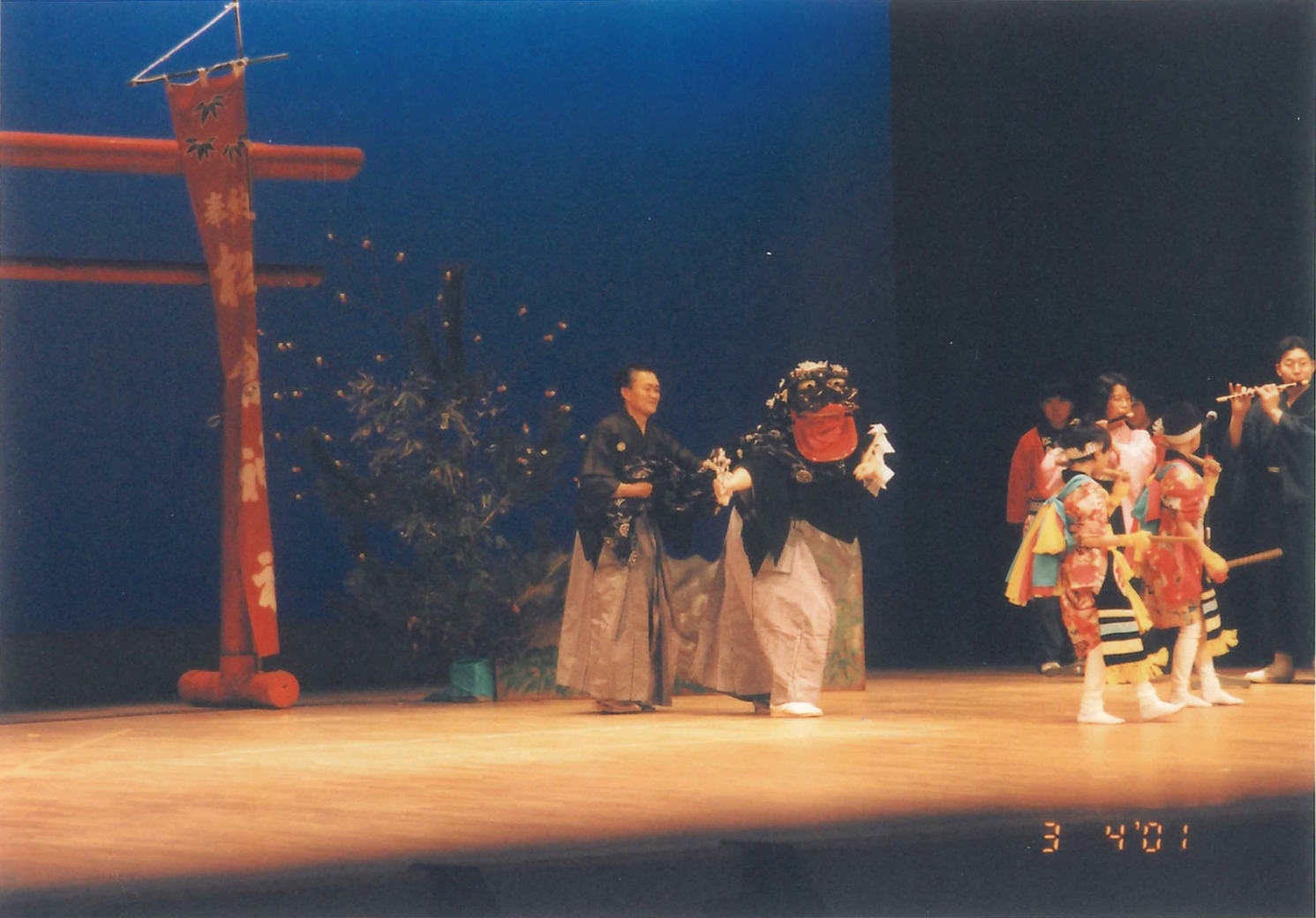ARTIST

Matsukura Daikagura
Matsukura Dai-Kagura is said to have originated around 400 years ago (March 7, 1611 (Keicho 16), according to the Noda Family Documents) in what is now Matsukura, Kasshimachi. According to accounts of local elders, during the bustling period of trade and commerce after the town became a trading post, around the time when it was under the control of the Nanbu Clan’s Otsuchi Daikan (local governor), there were visits by performers from Shichikencho in Morioka to local events such as the Matsukura Gongen Festival. As such, it is believed that Matsukura Dai-Kagura has been handed down at that period of time. One theory also claims that it shares the same lineage as the Kuribayashi Sawada Dai-Kagura and Dosen Dai-Kagura.
After, from the Meiji and Taisho eras to the early Showa era, dances were offered during festivals in the Matsukura area, as well as during weddings, but the tradition fell into a decline after World War II, and with only two dancers remaining. It was thought to be almost impossible to revive the Kagura. However, in the late 1970s, an initiative was launched as part of neighborhood association activities to encourage local youth through folk performing arts. With their hope of fostering the new generation, these associations played a central role in bringing about successors and intergenerational exchange with the cooperation of local elementary and middle schools.